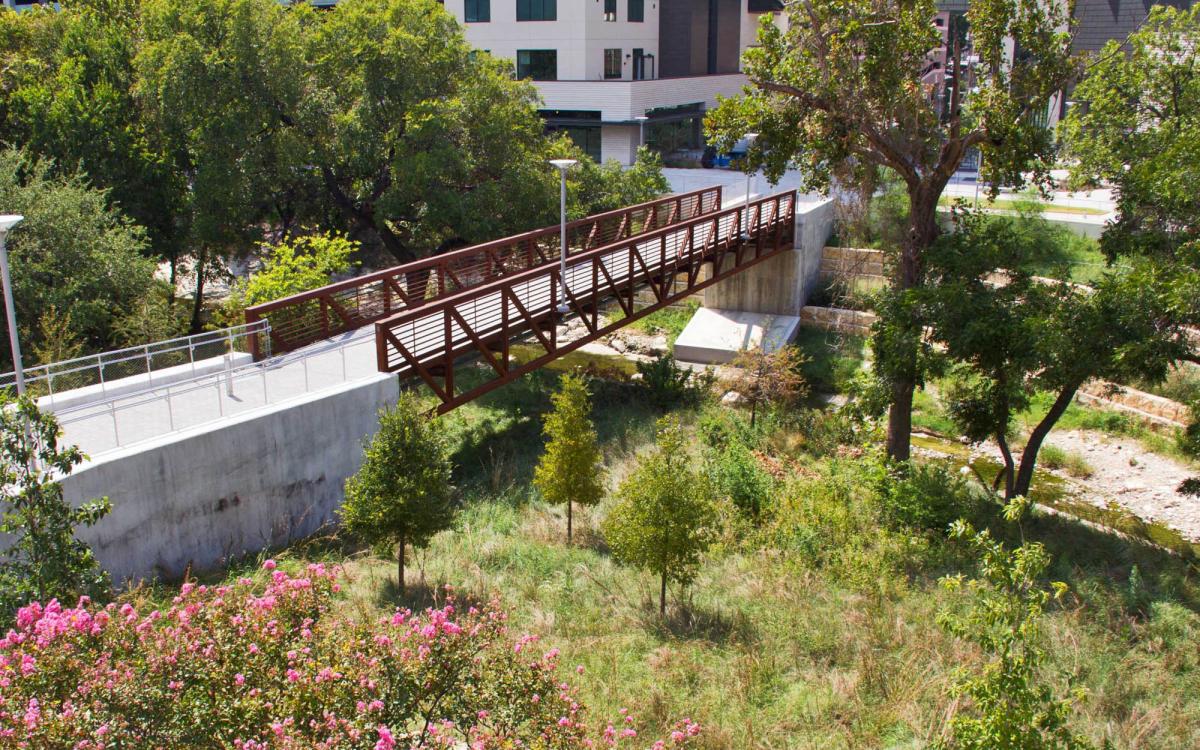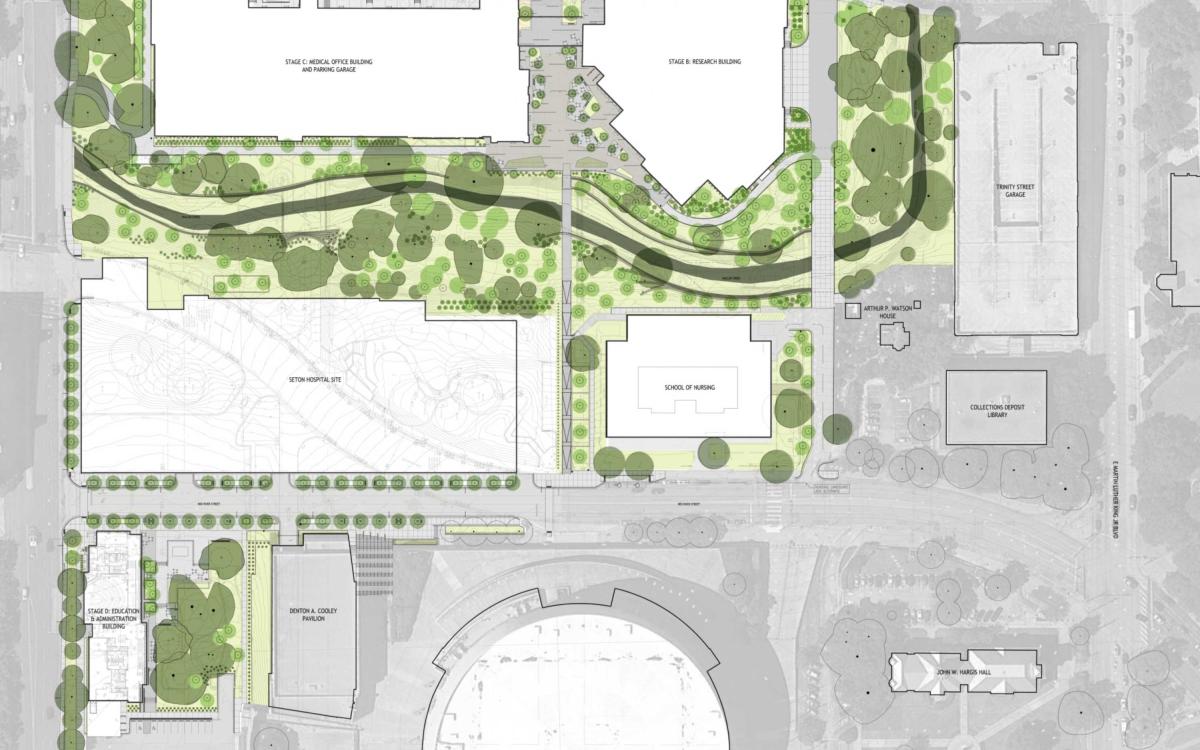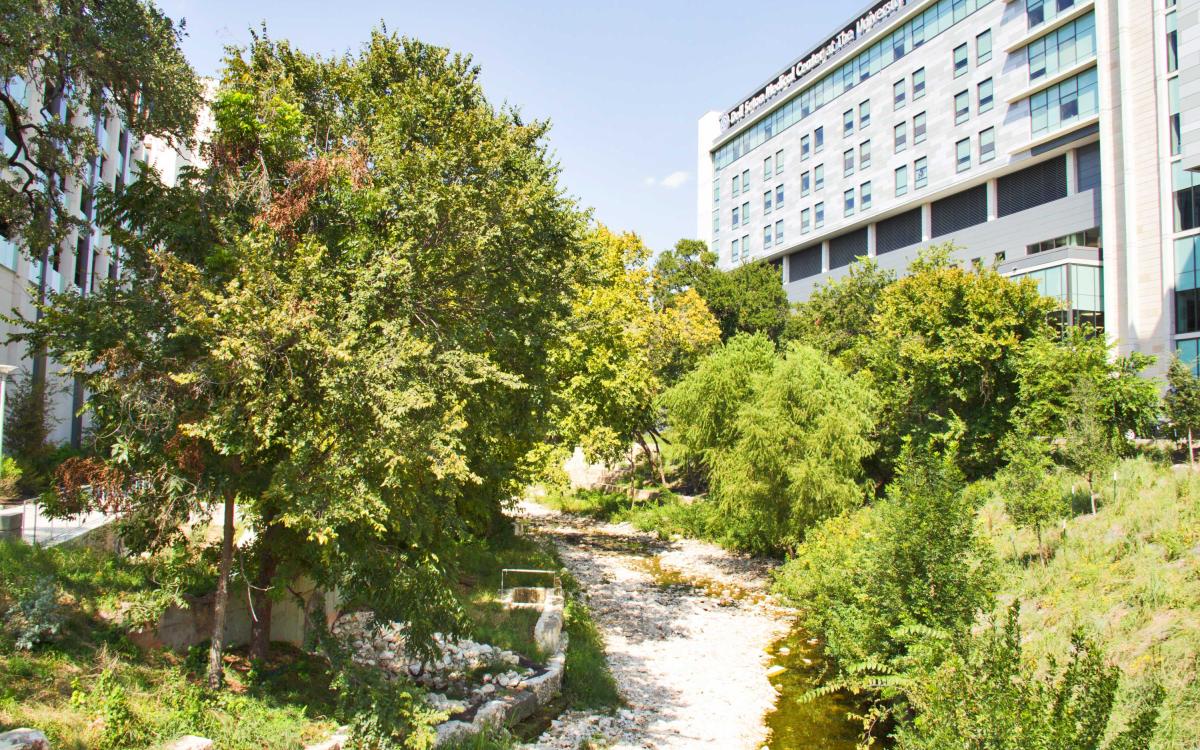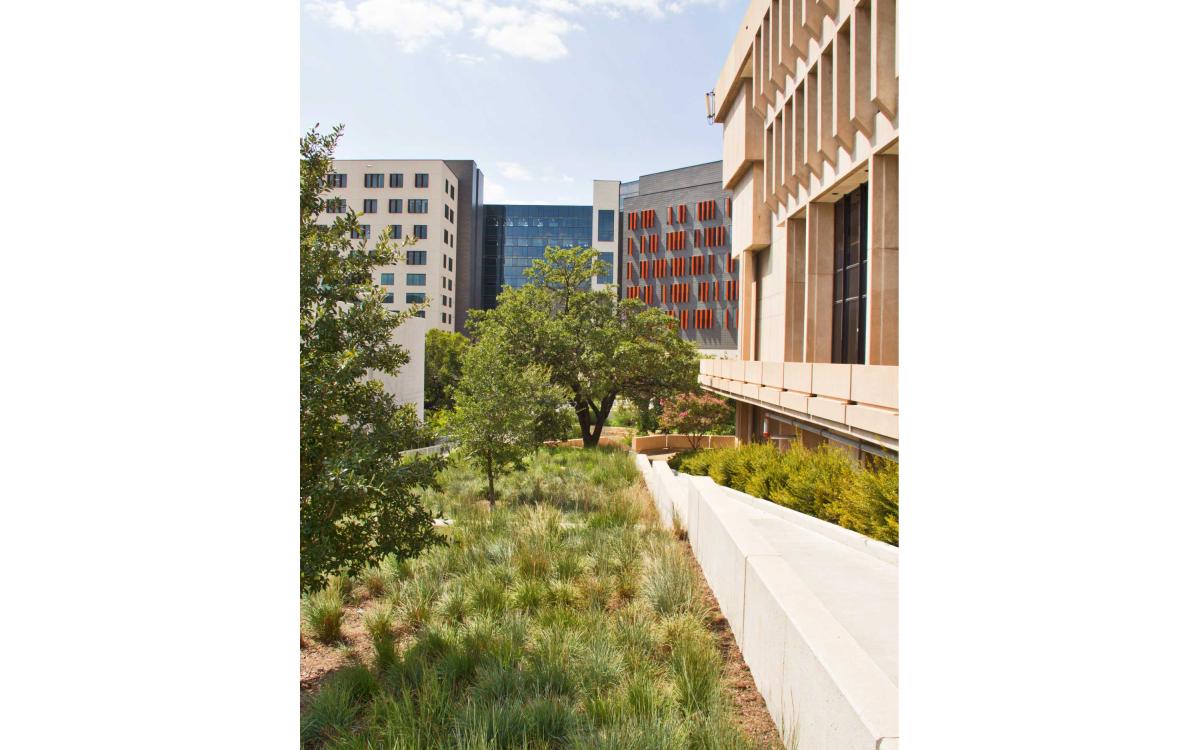Austin, TX
United States
The Dell Medical School and its teaching hospital, Dell Seton Medical Center, are part of a 16.2-acre development located in central Austin on the University of Texas campus. The Dell Medical School district is the first SITES v2 Gold certified project in Texas. The completion of this project in November 2017, provided green spaces around the building and along Waller Creek that have become an urban oasis, providing environmental and human health benefits to students, educators, patients and the greater community.
Running directly through the middle of The Dell Medical School is Waller Creek, a previously neglected urban stream that played an integral role in influencing design efforts. One of the key elements of the project’s design focused on improving the ecological function of the creek corridor. Prior to construction, approximately 70 percent of the vegetative canopy along the creek was comprised of invasive species. The process for restoring the creek was an 18-month process that included the removal of invasive species, stream bank stabilization and the re-vegetation of diverse native plant communities. Formal planting areas around the buildings prioritized the usage of native vegetation which helped reduce irrigation by over 75 percent.
Through careful design and planning, The Dell Medical District accomplished a sustainably resilient environment that reduced outdoor water use, restored 100 percent of the native plant communities along the riparian corridor, conserved and utilized native plants, reused salvaged plants, leveraged recycled content for 28 percent of the materials cost and restored 3,318 cubic yards of soil. Stormwater management features were designed as site amenities to provide visitors with a connection to the local climate and hydrology. Using a combination of rain gardens, pervious pavers, rainwater harvesting, and a green roof, the project manages the 80th percentile rainfall event or approximately 46,939 cubic feet of water.
Learn more about this project and earn SITES-specific CE hours.




